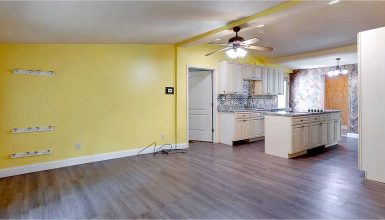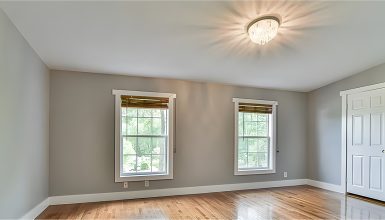Efficient insulation in mobile homes is a game-changer. It’s all about keeping your space cozy, no matter the weather outside. Think of insulation as a blanket for your home. Just like a blanket keeps you warm, insulation keeps your mobile home warm in winter and cool in summer. And who doesn’t love saving money? With good insulation, your heating and cooling systems don’t have to work as hard. Here’s how you can improve insulation in your mobile home walls effectively:
1. Choosing the Right Insulation Material
Picking the proper insulation for your mobile home is like choosing the best winter coat. You’ve got options, mainly fiberglass and foam board. Fiberglass is fluffy and traps air, making it an excellent insulator. It’s like wrapping your home in a warm hug. Foam board, on the other hand, is rigid and excellent at blocking heat flow. It’s like a sturdy shield against the cold or heat.
The trick is to look at insulation value and how well it fits into your walls. The insulation value, or R-value, tells you how good the material is at keeping the temperature just right. Higher R-value? Better insulation. But, the fit is just as important. You want something that snugly fits into your mobile home’s walls, filling every nook and cranny without squishing down or leaving gaps.
2. Sealing Gaps Before Insulating
Before you even think about insulation, playing detective and finding any sneaky cracks or gaps is crucial. Why? Because air loves to escape through these tiny spaces. Sealing them up with caulk or foam is like closing the door so the warm (or cool) air can’t run away. This step might seem small, but it’s mighty. By sealing gaps first, you ensure the insulation you install afterward can do its job better. It’s like making sure the lid is tight on a jar – it keeps everything inside just right. This way, your insulation works smarter, not harder, making your mobile home more comfy and your energy bills more friendly.
3. Understanding and Selecting R-Value
R-value is a big deal when it comes to insulation. It’s like the superhero strength level of your insulation material. The “R” stands for resistance to heat flow. The higher the R-value, the better your insulation can keep heat in (or out), making your mobile home more energy-efficient. It’s like comparing a thin T-shirt to a thick winter coat. The winter coat (high R-value) keeps you warmer than the T-shirt (low R-value).
When choosing insulation, aim for the highest R-value you can afford that fits your space. But remember, more isn’t always better. It’s like shoes; the best pair fits just right. Pick an R-value high enough to keep you comfy but suitable for your mobile home’s structure and climate. This way, you get the most bang for your buck without overspending on unnecessary extra insulation.
4. The Role of Vapor Barriers
Vapor barriers are like the unsung heroes of home insulation. They’re sheets on the warm side of your insulation to stop moisture from sneaking in. Why does this matter? Because moisture can lead to mold, rot, and all sorts of trouble for your home. It’s like wearing a raincoat over your sweater. The sweater keeps you warm, and the raincoat keeps you dry.
Placing vapor barriers correctly is crucial. They must face the warm side to prevent indoor moisture (like cooking or showering) from entering the insulation. In cold climates, this means the inside of your home. In hot, humid climates, it’s the opposite. Vapor barriers keep your insulation dry and effective, ensuring your mobile home stays cozy and mold-free. It’s an extra step that makes a big difference in protecting your space and keeping it comfortable.
5. Reflective Insulation for Hot Climates
Reflective insulation is like sunglasses for your home. It bounces the sun’s heat away, keeping the inside of your mobile home cooler. This type of insulation has a shiny surface that reflects heat, making it perfect for places where the sun loves to shine. Just like wearing light colors on a hot day helps keep you cool, reflective insulation does the same for your home.
You’ll want to use reflective insulation in parts of your mobile home that get hit by direct sunlight. Think of it as putting up a shield in your attic or walls facing the sun. This can significantly reduce the heat entering your home, making your air conditioner’s job much easier and saving you money on cooling costs.
6. Upgrading Windows and Doors for Better Insulation
Windows and doors are like the eyes and mouth of your home; they need to be well-dressed to keep the temperature inside just right. Double-glazing on windows and proper sealing can make a huge difference. Double-glazed windows have two layers of glass with a space between them. It’s like having an extra barrier that keeps the outside temperature from messing with your comfort inside.
Upgrading to double-glazed windows is a smart move. It’s like putting a snug hat and scarf on your home to keep the warm air in winter and the hot air out during summer. For doors, adding weather stripping or a door sweep is like giving your home a pair of comfy, snug boots that keep drafts out.
These upgrades can be an investment upfront, but they make your mobile home more energy-efficient. Plus, they can also help reduce outside noise, making your living space more comfortable, quieter, and more peaceful temperature-wise.
7. Checking and Improving Underbelly Insulation
The underbelly of your mobile home is like the foundation of your comfort. It’s what stands between you and the chilly ground or hot earth below. Keeping the underbelly insulation in top shape is crucial. If damaged or missing, you might invite the outside weather in for a cup of tea. You’ll feel it under your feet with floors that get too cold or hot.
Regularly check the insulation under your home to keep your toes happy and your energy bills low. Look for any tears, gaps, or areas where it’s come loose. Repairing or replacing underbelly insulation might seem daunting, but it’s like patching a quilt. You want no gaps where cold or heat can sneak in. Use the right materials that fit snugly in place, and secure them well. This can make a world of difference in keeping your floors comfortable year-round.
8. The Value of a Professional Energy Audit
Think of a professional energy audit as a health check-up for your home’s energy use. An expert comes in, much like a doctor with a stethoscope, but instead of checking your heartbeat, they’re checking how well your home keeps in the heat or cool. They use special tools to find where energy might slip out, like through drafty windows, thin walls, or under-insulated attics.
This audit is more than just a once-over. It gives you a detailed map of your home’s energy strengths and weaknesses. This info lets you choose where to add insulation, seal leaks, or upgrade windows. It’s tailored advice, fitting your home’s needs like a custom suit. This means you spend money only where it counts, making your mobile home as energy-efficient as possible. Plus, it’s a move that pays back over time through lower energy bills and a more comfortable living space.

















